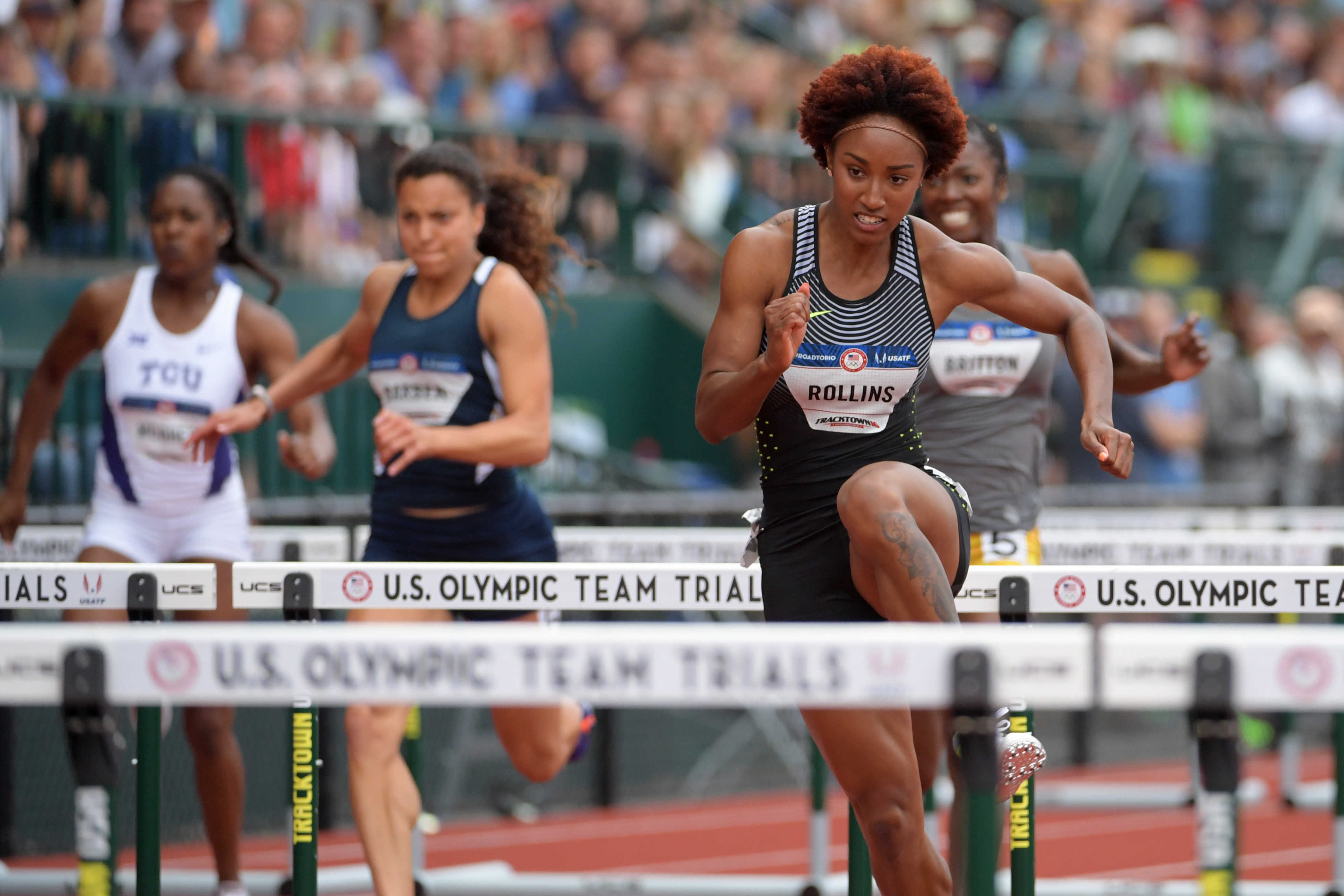EUGENE, Ore. — There is a certain inherent cruelty to these U.S. Olympic trials, which in its strict selection procedure tends to condense four years of competition and training into exponentially smaller segments: inches for jumps and throws, seconds for distance events, nanoseconds for sprints.
Consider the case of Candice Price, who at a meet held less than a month before Thursday’s opening heats of the women’s 100-meter hurdles had run the event in 12.75, the world’s 13th-fastest time this season.
There’s just one problem. That time also ranked 10th among U.S. hurdlers — meaning that when only the top three finishers at the trials make the U.S. team, being ranked among the best in the world is still not good enough to reach the Rio Games.
“That’s the thing about the hurdles,” said Queen Harrison, who finished sixth in qualifying. “It really sucks, because you can only bring three girls. But I know we have so many other girls in the chamber that can do just as well.”
![Watch: Crash-filled 800 leads to heartbreak at U.S. Olympic trials [oembed : 86833682] [oembed : 86833682] [oembed : 86833682] [oembed : 86833682] [oembed : 86833682] [oembed : 86833682] [oembed : 86833682] [oembed : 86833682]](/Portals/_default/Skins/PrestoLegacy/CommonCss/images/smartembed.png)
Is this the most loaded U.S. field at the trials? There’s absolutely no question: Entering the trials, Americans had run the 11 fastest times and 17 of the top 20 times in the event in 2016, creating a vastly greater level of competition at these trials than will be seen at the upcoming Games.
“We’re so dominant,” said Kristi Castlin, whose 12.68 was just off her season-high of 12.62 set at the Drake Relays in April. “I can’t remember the last time someone from another country finished in front of me. It’s really exciting — it raises the bar. We have 11 of the top times in the world. That really just goes to show you how good we really are.”
It’s only logical to expect the three U.S. hurdlers who advance through these brutal trials to then be viewed as the favorites to claim medals in Rio — with the same threesome at the head of the pack for gold, silver and bronze.
“It’s sometimes tough,” Castlin said. “You’re sometimes like, ‘Man, is it really fair?’ But the rules are the rules. You can’t change it. So (Friday) is about who’s the best on that day.”
Price fell short of Friday’s semifinals, running a disappointing 13.39, but other U.S. pace-setters advanced.
![Early riser: Oregon WR Devon Allen hurdles to Olympic Trials [oembed : 86833686] [oembed : 86833686] [oembed : 86833686] [oembed : 86833686] [oembed : 86833686] [oembed : 86833686] [oembed : 86833686] [oembed : 86833686]](/Portals/_default/Skins/PrestoLegacy/CommonCss/images/smartembed.png)
Leading the way was Brianna Rollins (12.56), who nosed ahead of Kendra Harrison (12.57), whose 12.24 here at Hayward Field in May paces the world in 2016 and stands as the second-best time in the event’s history, trailing only the 12.22 run in 1988 by Bulgaria’s Yordanka Donkova.
In fact, each of the top nine U.S. hurdlers in 2016 reached the semifinals, creating a winner-take-all Friday that, for the athletes, will be as much a mental task as physical.
There will be no surprises: The hurdlers face each other during Diamond League competition, Castlin said, breeding a sense of familiarity while underlining the need for a rock-solid focus. “All it takes is a hiccup” to fall behind the pack, Queen Harrison said.
“I think it’s mental,” she added. “I think you have to have that confidence, because so many girls are literally neck and neck — one person wins this week, another person wins the other week. So if you’re not confident in your ability and you don’t leave it all to God, you’re going to falter at the line.”
Queen Harrison would know: She ran a 12.88 in the semifinals at the 2012 Olympic trials, missing out on a spot in the final “by the hair of my chinny chin chin.” In 2016, it will take “my best.”
![USA serves notice: Seven world-leading performers at Olympic track trials [oembed : 86833694] [oembed : 86833694] [oembed : 86833694] [oembed : 86833694] [oembed : 86833694] [oembed : 86833694] [oembed : 86833694] [oembed : 86833694]](/Portals/_default/Skins/PrestoLegacy/CommonCss/images/smartembed.png)
It takes faith in your ability, said Castlin, who predicted it would take a time at or below 12.50 to reach the Rio Games. “Here you just have to be really strong mentally. Not thinking that there are all these other girls in the race but just you executing what you’ve been taught in practice.”
One hurdler has a similar perspective — though perhaps a slightly different goal. Among a dominant class of Americans, Keni Harrison has been the most dominant; she owns each of the top four and five of the top seven times worldwide in 2016.
Unlike the recent Prefontaine Classic, however, where Keni Harrison chased the world record amid a far less imposing field, the trials have a different feel: Survive, reach the semifinals, reach the finals and advance.
![Brittney Reese is back and better than ever [oembed : 86836052] [oembed : 86836052] [oembed : 86836052] [oembed : 86836052]](/Portals/_default/Skins/PrestoLegacy/CommonCss/images/smartembed.png)
“I’m just really anxious,” she said. “With the U.S. having the top eight in the world, you’ve just got to do what you’ve got to do. But I’m not really worried about that. I just want to come across the line in the top three.”
Yet one thing is certain: With so much talent — a deeper roster than any group here — these trials will provide an immensely stronger field than any U.S. hurdler will see at the Summer Games. In turn, the final on Saturday promises to far more competitive than the same event in Rio.
“Oh, by far,” Queen Harrison said. “There’s so many girls, like, we’ll actually be better than the Olympic final. Almost tenfold.”
![U.S. Olympic track and field trials [gallery : 86622368]](http://www.gannett-cdn.com/-mm-/8530345521bc828def14e6979f048f89854bafe5/c=0-360-1784-1885/local/-/media/2016/07/05/USATODAY/USATODAY/636032747803631869-USATSI-9370063.jpg)


![2016-7-7 keni harrison [image : 86833870]](http://www.gannett-cdn.com/media/2016/07/07/USATODAY/USATODAY/636035246550806982-USP-TRACK-AND-FIELD-2016-U.S-83195306.JPG)
